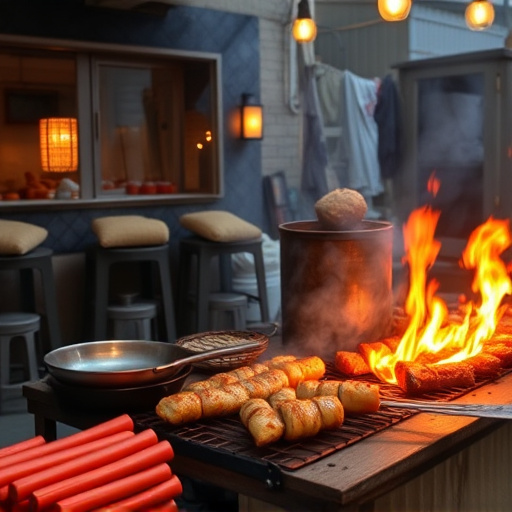When selecting a BBQ ham, prioritize tenderness and flavor, opting for cured, smoked ham with balanced meat-fat content. Consider bone-in hams for enhanced marbling. Choose cutting styles based on cooking methods, with thick cuts for slow cooking and thin slices for faster grilling or smoking. Seasonings and marinades are key: use a dry rub for crust and a marinade with soy sauce, vinegar, citrus juices, herbs, and spices for depth. Smoke ham at low temps to achieve tenderness. Serve with refreshing sides like coleslaw and sweet beans, and creative seasonal favorites. Beautifully plate ham on a large platter with garnishes, offering individual bowls of sauces. Store leftovers in an airtight container for 3-4 days, reheating gently in the oven.
Unleash the comfort of a sizzling BBQ ham—a classic that brings people together. This comprehensive guide takes you on a journey from selecting the perfect cut, mastering seasoning and smoking techniques, to choosing the ideal side dishes. Learn secrets to achieving tender, flavorful ham and discover how to store and reheat leftovers, ensuring your BBQ ham recipe becomes a family favorite and a memorable dining experience.
- Selecting the Perfect BBQ Ham: Tips for Choosing a Tender and Flavorful Cut
- Seasoning and Marinades: Unlocking the Secrets to Infusing Flavor
- Smoking Techniques: Mastering the Art of Slow-Cooked BBQ Ham
- Side Dishes to Complement Your BBQ Ham Feast
- Servings and Presentation: Making Your BBQ Ham Dinner Memorable
- Storing and Reheating: Ensuring Your Leftovers Stay Delicious
Selecting the Perfect BBQ Ham: Tips for Choosing a Tender and Flavorful Cut
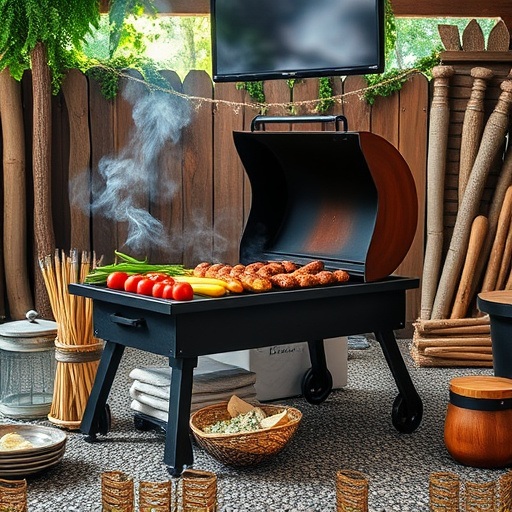
When it comes to selecting the perfect BBQ ham for your recipe, tenderness and flavor are key. Look for a ham that’s been properly cured and smoked, as this ensures a rich, deep taste. Opt for a cut with a good balance of meat and fat—the fat adds juiciness while the meat provides structure. Bone-in hams tend to be more flavorful due to the marbling of fat throughout the meat.
Consider the cutting style; some BBQ ham recipes prefer a thick cut, which is ideal for slow cooking over low heat to pull the meat apart. Others may call for a thinner slice, suitable for faster grilling or smoking. Check the packaging for details on the cutting style and choose according to your preferred method and desired texture. Always look for high-quality ingredients and consider where the ham was sourced to guarantee the best flavor and tenderness.
Seasoning and Marinades: Unlocking the Secrets to Infusing Flavor

Seasoning and marinades play a pivotal role in transforming plain ham into a mouthwatering BBQ masterpiece. The key to unlocking the secrets of flavor infusion lies in combining the right spices and sauces, allowing the ham to absorb their rich tastes. A good BBQ ham recipe often starts with a dry rub, a blend of salt, pepper, paprika, garlic, and onions, which creates a crusty exterior while enhancing the meat’s natural juiciness.
For an extra level of depth, a marinade can be introduced, typically consisting of liquids like soy sauce, vinegar, or citrus juices, along with herbs and spices. This mixture penetrates the ham, offering a burst of flavor during cooking. The process of marination is an art, as allowing the meat to sit in the marinade for varying durations enables it to absorb flavors, resulting in tender, succulent slices that dance on the palate—the ultimate treat for any BBQ ham enthusiast.
Smoking Techniques: Mastering the Art of Slow-Cooked BBQ Ham
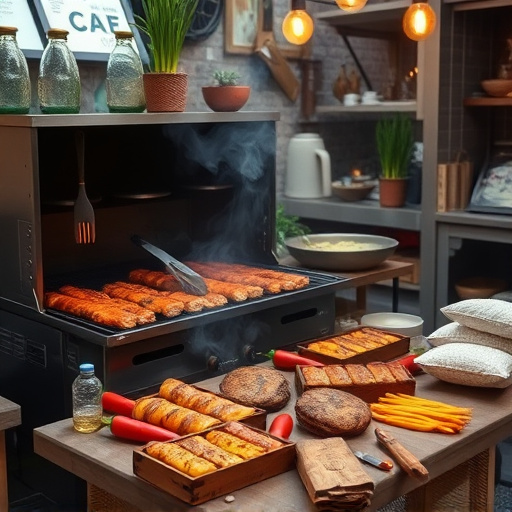
Smoking techniques are the heart of crafting comforting BBQ ham recipes. The art of slow-cooking transforms the meat into a tender, flavorful delight that melts in your mouth. Traditional methods involve using a smoker, either wood or electric, to gradually cook the ham at low temperatures. This process allows the rich flavors of the smoke to permeate every fiber of the meat, creating a unique, distinctive taste.
Experienced BBQ enthusiasts often experiment with different smoking woods like oak, hickory, or applewood, each imparting its own distinct aroma and flavor profile. The key lies in maintaining a consistent temperature and gently cooking the ham for hours until it reaches that perfect stage of doneness, ensuring it’s juicy and tender without drying out.
Side Dishes to Complement Your BBQ Ham Feast
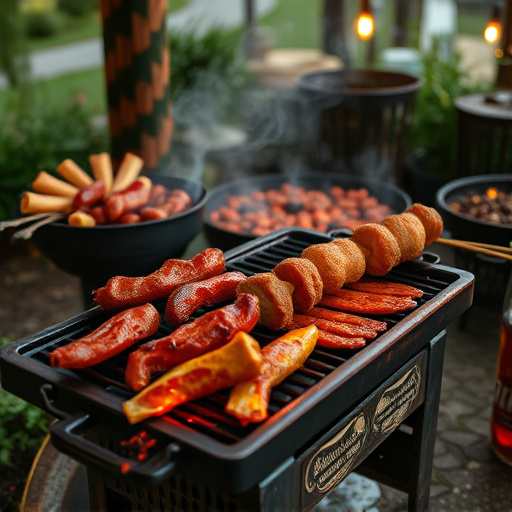
When hosting a BBQ ham feast, the right side dishes can elevate the entire dining experience. For a balanced and comforting meal, consider classic combinations like coleslaw, offering a refreshing crunch to offset the rich, smoky flavor of the ham. Baked beans are another staple, adding a sweet and savory element that pairs perfectly with the succulent meat.
Beyond these essentials, get creative with additional side dishes tailored to your bbq ham recipe. Grilled corn on the cob brings a burst of summer flavors, while grilled vegetables like zucchini and bell peppers add a healthy twist. For a tangy kick, offer a homemade apple salsa or peach chutney that complements the ham’s sweetness. These side choices not only diversify the menu but also cater to various palates, ensuring every guest finds something to love in your BBQ ham feast.
Servings and Presentation: Making Your BBQ Ham Dinner Memorable
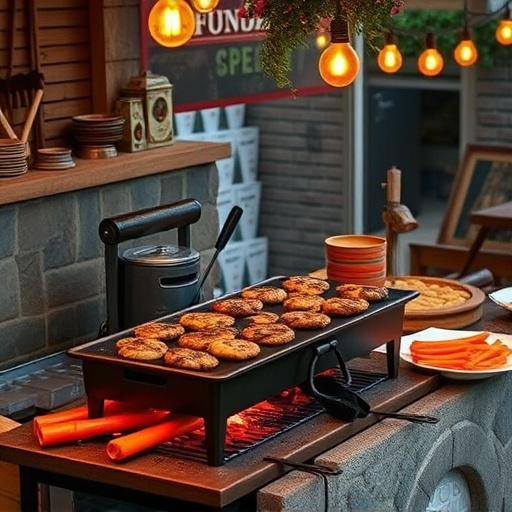
When serving a comforting BBQ ham with side dishes, presentation is key to making your dinner memorable. A beautifully plated meal can elevate the dining experience and leave a lasting impression on your guests. Consider arranging the sliced ham in a circular pattern on a large platter, garnished with fresh herbs or a sprig of rosemary for an appealing visual touch. Accompany it with a selection of complementary side dishes like crispy roasted potatoes, sweet potato mash, coleslaw, or grilled vegetables to create a vibrant and inviting spread.
To enhance the overall BBQ ham recipe, think about adding a drizzle of homemade barbecue sauce or a sprinkle of cracked black pepper on top of each serving. You can also include small individual bowls of sauces on the table, allowing guests to customize their dishes according to their preferences. This interactive approach not only encourages engagement but also ensures that every bite is as delicious and memorable as the presentation.
Storing and Reheating: Ensuring Your Leftovers Stay Delicious
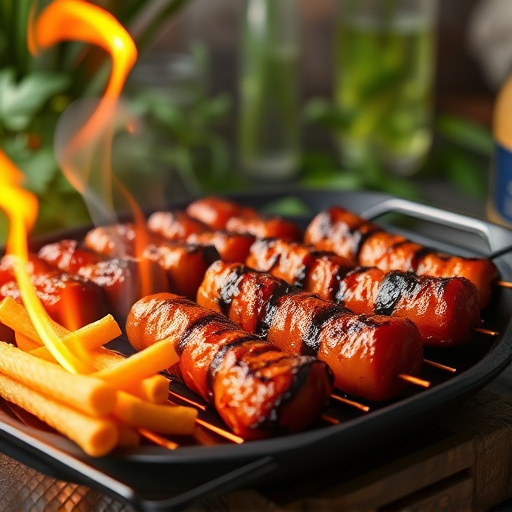
When it comes to storing and reheating BBQ ham leftovers, there are a few simple steps to ensure your delicious meal stays that way. First, allow the ham to cool completely before placing it in the refrigerator; this helps maintain its quality and texture. Store the ham in an airtight container or wrapped tightly in plastic wrap, ensuring no moisture is lost. Leftovers can be kept in the fridge for up to 3-4 days, depending on the amount.
Reheating is a breeze; simply warm the ham gently in the oven at a low temperature (around 300°F/150°C) until it’s hot throughout. Avoid overcooking or drying out the meat by not heating it too quickly or to a high temperature. To enhance its flavor, consider reheating with your favorite BBQ sauce or adding garlic and herbs for an extra comforting touch. Your BBQ ham recipe will be just as tasty, if not better, when enjoyed as leftovers!
